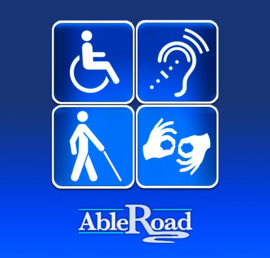Pat Markowski said she has been married for a lot of years, but began having communication problems with her husband as she lost her hearing.
"I wasn't hearing him. And I wasn't enjoying TV," Markowski said. "If I turned it up, I was blasting my husband out."
 |
| "You bet hearing is something we take for granted," Markowski said. |
But now Makowski is enjoying life again and communicating with her husband because of her new hearing aids she was able to purchase with a low--interest loan from the Utah Assistive Technology Foundation.
"They help me immensely, and my hearing aids have made my life a lot easier," she said.
UATF is a non-profit initiative of the Utah Assistive Technology Program providing alternative finance options to Utahns with disabilities to purchase assistive technology devices like hearing aids, adapted vans, communication devices.
"The loan process was so easy," she said. "It surprised me how reasonable it was."
Markowski had checked on getting a loan through a bank and a credit union, and said the rates were not affordable for her.
"I'm very thankful for the loan. The cost was my first concern - I wouldn't have been able to get the hearing aids without it."
Insurance does not pay for hearing aids, so most people end up paying for them out of pocket.
"I never realized how bad off I was until I got these," Markowski said.
Learn more about UATF, and find loan applications online at www.uatf.org.







